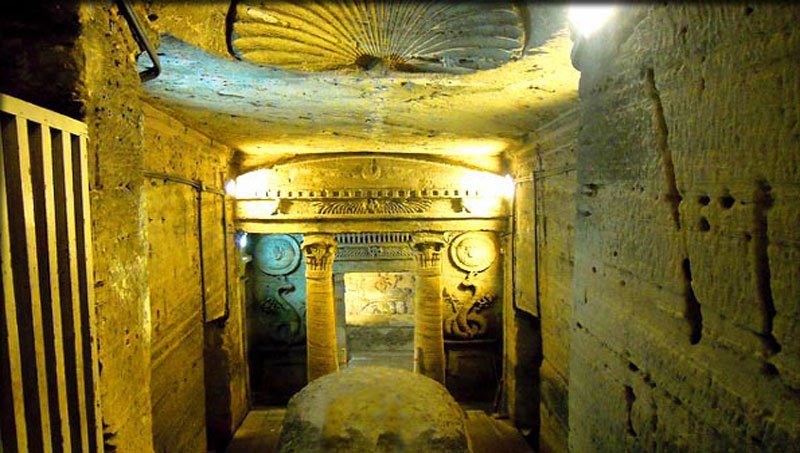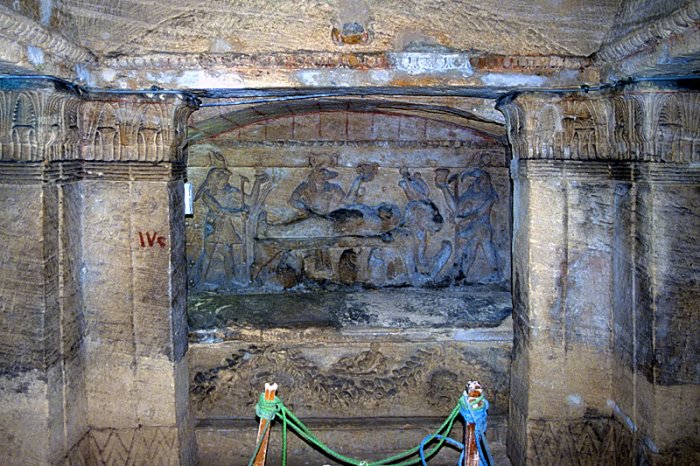Catacombs Of Kom El Shoqafa – Largest Roman Burial Site In Egypt
A. Sutherland - AncientPages.com - Located in Alexandria, Egypt the catacombs of Kom el Shoqafa is one of the Seven Wonders of the Medieval Ages. It’s an archaeological site of great importance.
The tombs were tunneled into the bedrock in the age of the Antonine emperors (2nd century A.D.) The catacombs were originally intended as a burial chamber for only one family, but the privately funded project was expanded to allow for many more people.
The necropolis consists in fact of a series of Alexandrian tombs, statues, and archaeological objects of the Pharaonic funeral cult with Hellenistic and early Imperial Roman influences.
Origin Of The Name Kom El Shoqafa
Kom el Shoqafa means Mound of Shards. This is because the area used to contain a mound of shards of terra cotta which mostly consisted of jars and objects made of clay. These objects were left by those visiting the tombs, who would bring food and wine for their consumption during the visit. However, they did not wish to carry these containers home from this place of death so they would break them.
The Catacombs Of Kom El Shoqafa Consist Of Three Levels Cut Through Solid Rock
The Catacombs reach 100 feet down into the ground into solid rock.
The tombs are truly remarkable and their existence testifies to an engineering feat of great magnitude. The funerary motifs are pure ancient Egyptian, but the architects and artists were schooled in the Greco-Roman style. Applied to the themes of Ancient Egyptian religion, it has resulted in amazing integrated art, quite unlike anything else in the world. For example, some statues are Egyptian in style, yet bear Roman clothes and hairstyles whilst other features share a similar style.
Entrance to a burial chamber. Image credit: Jerrye & Roy Klotz, MD - CC BY-SA 3.0
When you enter the catacombs of Kom el Shoqafa there is a circular staircase that takes the visitor several levels deep into the ground. To the left is the room where mourners of the deceased would sit and bring offerings. Another staircase leads down to a room full of sculptures.
The central tomb - located at the bottom of the building - is the main attraction of the catacombs of Kom el Shoqafa. In the vestibule of the tomb, there are bas-reliefs of bearded snakes with shields decorated with the heads of jellyfish. The sculptures guard the central tomb and its treasures. In its interior, there are somewhat strange statues of Sobek and Anubis dressed in Roman armor from the 2nd century. Anubis at the door is the god of the dead, immortalized as a Roman legionary with a dragon's tail.
On the second floor of the Catacombs, there are relief decorations of sarcophagi and walls of the burial chamber, presenting a mixture of Egyptian, Greek, and Roman art.
From the central chamber of the tomb, corridors spread to rooms with more than 300 niches for the bodies of the dead (so-called loculi).
Hall Of Caracalla - Entering The Largest Roman Mass Burial Chamber In Egypt
On the first level, there is a hallway that leads to a room called the Hall of Caracalla. It’s a mass burial chamber. Although this room was not intended to be a tomb it does contain horse bones and the bones of young Christian men massacred by order of Emperor Caracalla in 215 A.D. as well as horse bones.
Funeral relief in the chapel, Kom el-Shuqafa, Alexandria, Egypt - Image credit: Roland Unger - CC BY-SA 3.0
The vestibule and central tomb chamber are the main chambers. They are lit by a single electric light bulb that throws the chamber into green, a perfect staging for that composite art. In the center of the facade, the familiar solar disk is carved below the frieze of serpents. Left and right are two serpents wearing the crowns of upper and Lower Egypt.
Three sarcophagi have been found in the Catacombs. The catacombs of Kom el Shoqafa are evidence of three cultures, religions, and art that came together on Egyptian soil.
Written by A. Sutherland - AncientPages.com Senior Staff Writer
Copyright © AncientPages.com. All rights reserved. This material may not be published, broadcast, rewritten or redistributed in whole or part without the express written permission of AncientPages.com.
More From Ancient Pages
-
 Unsolved Ancient Mystery Of Hand Of Prêles – Unique Discovery Of Ancient Bronze Hand Puzzles Scientists
Archaeology | Sep 28, 2018
Unsolved Ancient Mystery Of Hand Of Prêles – Unique Discovery Of Ancient Bronze Hand Puzzles Scientists
Archaeology | Sep 28, 2018 -
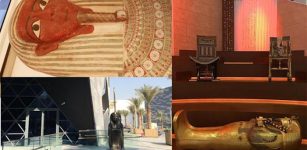 Ancient Coffin Of Priest Psamtik, Son Of Osiris And Five Replicas Of Goddess Maat Sent On Upcoming Expo
Archaeology | Oct 5, 2021
Ancient Coffin Of Priest Psamtik, Son Of Osiris And Five Replicas Of Goddess Maat Sent On Upcoming Expo
Archaeology | Oct 5, 2021 -
 On This Day In History: King Alexander II Was Crowned At Scone, Scotland – On Dec 6, 1214
News | Dec 6, 2016
On This Day In History: King Alexander II Was Crowned At Scone, Scotland – On Dec 6, 1214
News | Dec 6, 2016 -
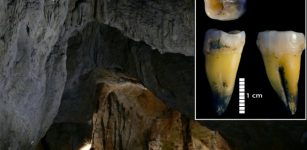 Bacho Kiro Cave: Genomes Of The Earliest Europeans – Sequenced
Archaeology | Apr 8, 2021
Bacho Kiro Cave: Genomes Of The Earliest Europeans – Sequenced
Archaeology | Apr 8, 2021 -
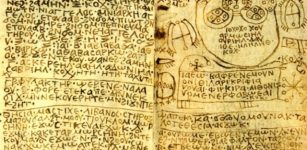 Ancient Mystery Of Baktiotha And The Egyptian Spell Book
Artifacts | Sep 4, 2015
Ancient Mystery Of Baktiotha And The Egyptian Spell Book
Artifacts | Sep 4, 2015 -
 Anglo-Saxon Kings Were Mostly Vegetarians Before Vikings Settled In England
Archaeology | Apr 21, 2022
Anglo-Saxon Kings Were Mostly Vegetarians Before Vikings Settled In England
Archaeology | Apr 21, 2022 -
 Paleolithic Inhabitants Of Cyprus Established Settlements Much Earlier Than Previously Estimated
Archaeology | May 17, 2024
Paleolithic Inhabitants Of Cyprus Established Settlements Much Earlier Than Previously Estimated
Archaeology | May 17, 2024 -
 Mysterious Books With Dangerous Secret Knowledge Deliberately Hidden From Public View
Featured Stories | Jan 8, 2024
Mysterious Books With Dangerous Secret Knowledge Deliberately Hidden From Public View
Featured Stories | Jan 8, 2024 -
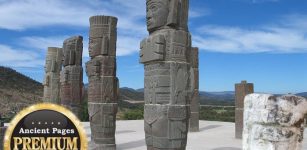 Secret Ancient Knowledge Of The Toltecs Examined
Ancient Mysteries | Aug 16, 2019
Secret Ancient Knowledge Of The Toltecs Examined
Ancient Mysteries | Aug 16, 2019 -
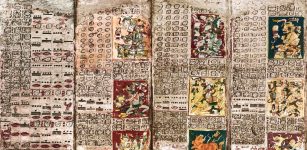 Dresden Codex – Probably The Oldest And Best Preserved Book Of The Maya
Ancient History Facts | Jun 24, 2016
Dresden Codex – Probably The Oldest And Best Preserved Book Of The Maya
Ancient History Facts | Jun 24, 2016 -
 Did An Ancient Supernova Force Humans To Walk Upright?
Human Beginnings | Oct 24, 2019
Did An Ancient Supernova Force Humans To Walk Upright?
Human Beginnings | Oct 24, 2019 -
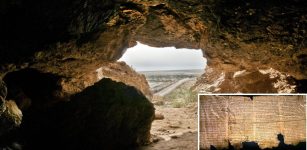 DNA Sheds New Light On The Mysterious Dead Sea Scrolls
Archaeology | Jun 2, 2020
DNA Sheds New Light On The Mysterious Dead Sea Scrolls
Archaeology | Jun 2, 2020 -
 Strange Ancient Mechanical Flying Animals – Mystery Of The Air Castle – Part 2
Ancient Mysteries | Mar 31, 2020
Strange Ancient Mechanical Flying Animals – Mystery Of The Air Castle – Part 2
Ancient Mysteries | Mar 31, 2020 -
 Those Who Mysteriously Disappeared To A World Beyond Human Understanding
Featured Stories | Apr 30, 2019
Those Who Mysteriously Disappeared To A World Beyond Human Understanding
Featured Stories | Apr 30, 2019 -
 Arian Tower: Pyramid-Shaped Mausoleum Of Nobleman Was Built On Top Of Medieval Hill Fort
Archaeology | May 19, 2018
Arian Tower: Pyramid-Shaped Mausoleum Of Nobleman Was Built On Top Of Medieval Hill Fort
Archaeology | May 19, 2018 -
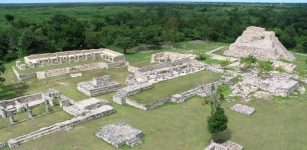 Mayapan: How The Last Big Mayan City Met Its End
Featured Stories | Jul 26, 2017
Mayapan: How The Last Big Mayan City Met Its End
Featured Stories | Jul 26, 2017 -
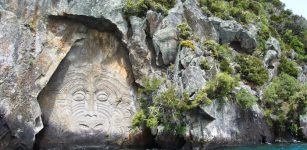 Ancestral Māori Adapted Quickly In The Face Of Rapid Climate Change – New Study Shows
Archaeology | Nov 10, 2022
Ancestral Māori Adapted Quickly In The Face Of Rapid Climate Change – New Study Shows
Archaeology | Nov 10, 2022 -
 Ancient DNA Reveals A Diverse Community Lived At Machu Picchu, The ‘Lost City Of The Incas’
Archaeology | Jul 26, 2023
Ancient DNA Reveals A Diverse Community Lived At Machu Picchu, The ‘Lost City Of The Incas’
Archaeology | Jul 26, 2023 -
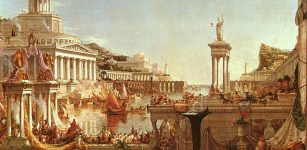 Did Lead Poisoning Cause The Fall Of The Roman Empire?
Archaeology | Oct 24, 2017
Did Lead Poisoning Cause The Fall Of The Roman Empire?
Archaeology | Oct 24, 2017 -
 DNA Analyses Suggest The Plague Contributed To Stone Age Farmers’ Decline
Archaeology | Jul 10, 2024
DNA Analyses Suggest The Plague Contributed To Stone Age Farmers’ Decline
Archaeology | Jul 10, 2024

